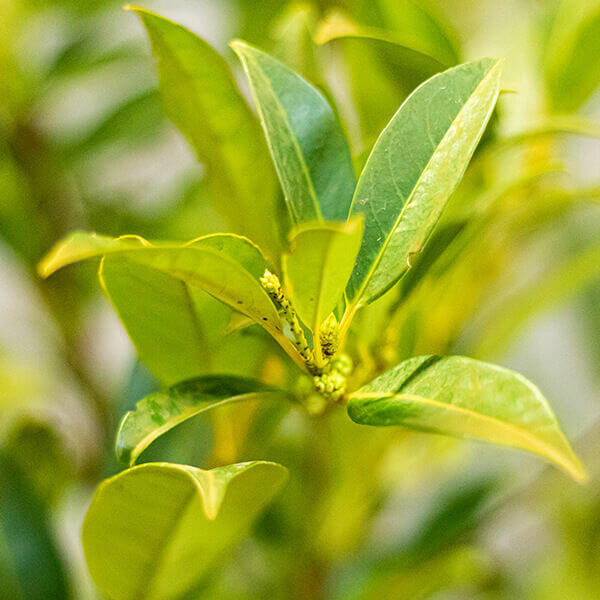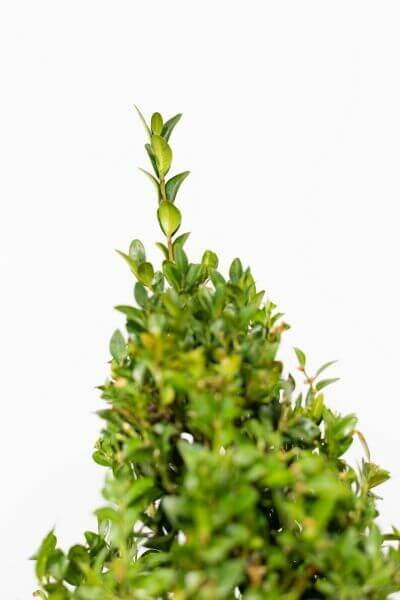Hedge Plants For Foliage Interest
Hedge Plants For Foliage Interest
Blog Article
Hedging Plants For Formal Hedges
Boost your garden's allure with lush hedge ranges such as Yew (Taxus), Thuja, Laurel, Photinia, and Bamboo, commemorated for their structural stability and ecological advantages.
Yew and Thuja offer evergreen protection and winter strength, while Laurel offers rapid development and broad, aromatic leaves.
Photinia includes seasonal appeal with its vibrant red foliage, and Bamboo provides a low-maintenance, serene atmosphere.
These hedges improve air quality, reduce noise, and develop tranquil, private spaces.
Correct planting, spacing, and upkeep guarantee vigorous growth and ecological harmony.
Check out how these lavish varieties can elevate your garden's charm and wellness.
Key Takeaways
Transform Your Garden With Lush Hedge Varieties
- Select Yew for its dense, evergreen growth and exceptional durability.
- Opt for Laurel for its fast development and broad leaves, making sure fast personal privacy.
- Choose Photinia for its vibrant seasonal foliage, which turns a striking dark red.
- Use Bamboo for a low-maintenance, winter-hardy hedge with visual appeal.
- Area plants 2-3 per meter and prune regularly for optimal growth and health.
Popular Hedge Plants
When transforming a garden with lush hedge varieties, it's necessary to think about popular hedge plants such as Yew, Thuja, Laurel, and Photinia due to their distinct qualities and advantages.
Yew (Taxus) is highly esteemed for its longevity and dense, green growth, making it a prime choice for enduring landscapes.
Thuja is noted for its evergreen foliage and robust winter resilience.
Photinia adds seasonal vibrancy with red leaves that darken in time, producing dynamic visual appeal.
Laurel offers quick growth and fragrant, broad leaves, ideal for quick personal privacy.
In Addition, Bamboo is an exceptional choice for ambiance, offering a low-maintenance, winter-hardy option that boosts the garden's visual with its sophisticated, swaying walking sticks.
These selections deal with a range of horticultural requirements and choices.
Advantages of Garden Hedges
Garden hedges use a wide variety of benefits, making them a valuable addition to any landscape. These natural barriers are cost-efficient to implement and supply substantial wind security, enhancing air circulation and adding to noise decrease. The dense foliage of hedges like Thuja and Beech ensures personal privacy by blocking visibility, developing a remote and serene environment.
Hedges likewise play an important function in microclimate guideline, offering a steady environment that promotes plant growth and lessens temperature variations. Their elaborate leaf structures filter pollutants, improving air quality and adding to a healthier garden ecosystem.
Additionally, hedges excel in sound reduction, soaking up and deflecting sound waves to lower ambient sound levels. This dual performance of offering both acoustic and visual privacy boosts the overall serenity and aesthetic appeal of any garden.
Planting and Maintenance Tips
For an effective hedge, meticulous preparation of the planting area is important. Ensure the soil has appropriate pH and drain to support strong root development.
Area the plants appropriately for the picked species. Water the hedge frequently throughout its preliminary development phase, adjusting as required with seasonal changes.
Execute a organized pest control and illness avoidance method, using chemical or organic treatments when required. Frequently examine for aphids, mites, and fungal infections.
Apply mulch to maintain moisture and suppress weeds. Seasonal pruning promotes dense growth and air flow, vital for plant health.
Following these standards will assist you cultivate a lively, well-maintained hedge that improves the charm of your garden.
Spacing and Cutting Standards
Spacing and Cutting Standards
Proper spacing and trimming are crucial for cultivating healthy, visually appealing hedges. Adequate spacing ensures each plant receives sufficient nutrients, light, and airflow.
Follow these guidelines for ideal hedge maintenance:
- Spacing: Position hedge plants 2-3 plants per meter to encourage robust growth.
- Pruning Techniques: Regular pruning is essential for maintaining wanted hedge height and shape. Cut brand-new growth in summer and cut down older wood throughout winter season.
- Seasonal Care: Change cutting schedules and techniques according to seasonal requirements to ensure plant health.
- Hedge Height: Regularly monitor and cut to keep the preferred hedge height and accomplish uniform visual appeals.
Complying with these actions will ensure your hedge flourishes, improving both the appeal and functionality of your garden.
Picking the Right Hedge
Selecting the Right Hedge
Selecting the proper hedge includes assessing factors such as fully grown height, foliage density, and ecological resilience. Effective hedge plant choice needs understanding each types' growth qualities and site-specific versatility.
For instance, Yew (Taxus) provides excellent durability here and dense development, while Thuja is noteworthy for its winter season resilience. Additionally, thinking about maintenance requirements is crucial; fast-growing types like Laurel or Privet need regular cutting, whereas low-maintenance choices like Bamboo or Ivy may be more suitable for those looking for minimal maintenance.
Environmental aspects such as soil type, light accessibility, and wetness conditions ought to likewise guide the choice procedure. This careful method ensures the chosen hedges will flourish, offering both visual and functional advantages to the garden landscape.
Delivery and Planting Suggestions
To guarantee your hedge plants flourish, they should be delivered by specialized carriers and planted quickly upon arrival.
Follow these vital actions for effective planting:
- Soil Preparation: Improve the soil with raw material to improve drainage and nutrient material.
- Planting Depth: Develop a trench two times the width and equal to the depth of the root ball.
- Watering Techniques: Water completely after planting, keeping the soil consistently moist however not filled.
- Mulching: Apply a layer of mulch to maintain wetness and suppress weeds.
Consumer Assistance and Service
Given the vital function of timely help in horticultural pursuits, our client assistance group is available 6 days a week through telephone, email, and social networks to provide expert suggestions and quickly address any issues. Their dedication to fast response times guarantees customer fulfillment by dealing with questions associated with plant health, optimum planting methods, and upkeep schedules.

Availability
-----------------
Within 24 hours
This extensive support system, reinforced by an excellent 9.3/ 10 customer ranking, highlights our dedication to improving the gardening experience for every customer.
Frequently Asked Concerns
For How Long Does It Take for Hedge Plants to Establish?
Hedge plants normally require one to 3 years to become totally established, with the specific duration differing by species and growing conditions.
Efficient care throughout this vital duration is important for robust development. Consistent watering, watchful weed control, and proper fertilizer application are pivotal in promoting strong root advancement.
For instance, fast-growing species like Laurel might develop faster, while slower-growing ranges such as Yew may take longer. Diligent maintenance speeds up the facility procedure, resulting in dense and healthy hedges.
What Are the Best Hedge Plants for Privacy?
The concern of the very best hedge plants for personal privacy includes examining evergreen and deciduous options.
Evergreen hedges like Thuja, Laurel, and Cypress provide year-round protection, guaranteeing continuous privacy.
In contrast, deciduous hedges such as Beech use seasonal personal privacy, shedding leaves in cooler months.
Secret maintenance suggestions for privacy hedges include routine trimming, fertilizing in spring, and proper spacing-- typically 2 to 3 plants per meter.
In addition, consistent watering and thorough weed elimination are crucial for promoting healthy, thick growth.
Can Hedge Plants Attract Wildlife to My Garden?
Yes, hedge plants can attract wildlife to your garden by supplying vital benefits like shelter, food, and nesting websites, thus boosting local biodiversity. For example, yew, holly, and laurel are excellent for bring in birds, while ivy supports a range of insects.
However, it is essential to note that there are some downsides, such as increased maintenance to manage bugs and regular maintenance. Carefully choosing and keeping hedge varieties can assist balance these benefits and downsides, eventually cultivating a dynamic and sustainable ecosystem in your garden.
Are There Any Blooming Hedge Plants Available?
Yes, there are flowering hedge plants readily available that can enhance the charm of your garden.
For instance, Elaeagnus, also called Olive Willow, produces aromatic white flowers in the fall, including a touch of sophistication.
Photinia, another popular choice, showcases lively red leaves that mature into a rich green, producing a vibrant visual result throughout the seasons.
To ensure these plants flourish, it's important to practice correct pruning strategies and seasonal maintenance, such as trimming brand-new development in the summer season and cutting down in the winter.
These steps will assist keep the health and visual appeal of your blooming hedges.
How Do I Avoid Pests in My Hedge Plants?
To avoid pests in hedge plants, employ natural pest control methods and keep appropriate hedge care. Introduce advantageous insects like ladybugs, which victimize damaging bugs, to produce a well balanced environment.
Routinely check your hedges for signs of invasion and without delay get rid of any afflicted parts to prevent the spread. Guarantee the health of your hedges by applying balanced fertilizers and providing adequate water.
Make use of mulching to retain soil moisture and proper spacing to decrease plant stress and promote robust development. These practices jointly assist in lessening insect issues and maintaining a healthy hedge.
Conclusion
In essence, picking the ideal hedge ranges such as Yew, Thuja, and Laurel can transform any garden into a tranquil sanctuary. These plants provide year-round greenery, boost visual appeal, and offer practical advantages like noise decrease and wind defense.
Appropriate planting techniques, precise spacing, consistent watering, and seasonal trimming are essential for ideal growth.
Reliable delivery services and expert consumer support ensure a seamless experience from purchase to planting, making it easier than ever to elevate your outside area.
Garden hedges offer a plethora of benefits, making them an important addition to any landscape. These natural barriers are economical to implement and offer significant wind security, enhancing air flow and contributing to noise reduction. The thick foliage of hedges like Thuja and Beech ensures privacy by blocking visibility, developing a secluded and peaceful environment.

Pruning Methods: Regular pruning is essential for keeping preferred hedge height and shape. Trim brand-new development in summertime and cut back older wood during winter season.
Report this page